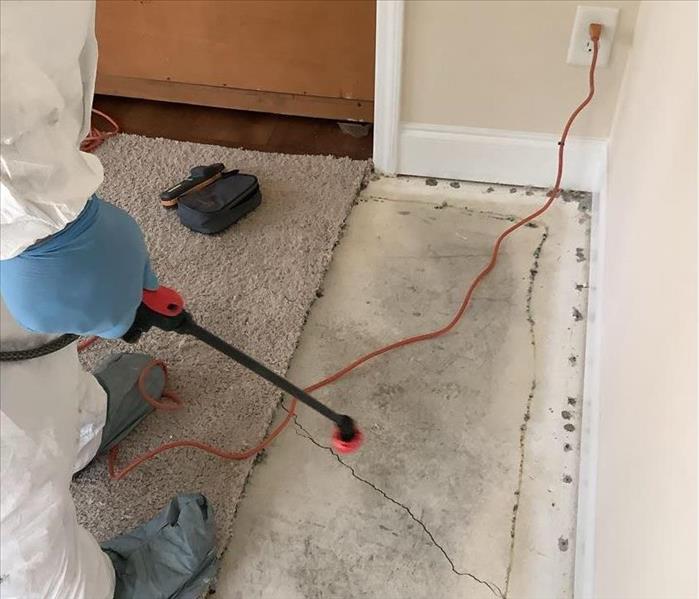Do Mold-Resistant Paints and Coatings Really Work?
7/15/2024 (Permalink)
 At SERVPRO of Johnston County South, we’re here to help you keep your home in top shape, no matter the challenge.
At SERVPRO of Johnston County South, we’re here to help you keep your home in top shape, no matter the challenge.
When tackling mold in your home, prevention is key, and one popular method is using mold-resistant paints and coatings. But do these products really work as advertised? In this blog, we’ll dive into what mold-resistant paint is, how it works, and whether it's a reliable option for keeping your walls mold-free.
What is Mold-Resistant Paint?
Mold-resistant paint is designed to inhibit the growth of mold on painted surfaces. It contains antimicrobial agents that mitigate mold spores from taking root and spreading. This type of paint is especially useful in areas of your home that tend to be damp or have high humidity levels, such as bathrooms, kitchens, and basements.
How Does Mold-Resistant Paint Work?
The key to the effectiveness of mold-resistant paint lies in its formulation. These paints are infused with compounds that actively discourage mold growth. When applied to walls and other surfaces, they create an environment that is less hospitable to mold. The antimicrobial agents in the paint disrupt mold spores’ ability to grow and multiply, helping to keep the coated surfaces cleaner and free of mold.
The Benefits of Using Mold-Resistant Paint
- Reduced Mold Growth: The most obvious benefit is its ability to mitigate mold growth, which helps maintain the structural integrity of your walls and reduces the need for frequent repaints due to mold damage.
- Ideal for High-Moisture Areas: For rooms that are prone to dampness, such as your bathroom or laundry room, mold-resistant paint can be a game-changer, providing an extra layer of protection against moisture-induced damage.
- Ease of Use: Just like any regular paint, mold-resistant paint is easy to apply, requiring no special techniques or tools. It’s a convenient option for both DIY enthusiasts and professional painters.
Limitations of Mold-Resistant Paint
While mold-resistant paint can be effective, it’s not a foolproof solution. Here are some limitations to consider:
- Not a Standalone Solution: It's important to manage expectations. Mold-resistant paint helps limit mold growth but doesn't address existing mold. If your home already has a mold issue, it's necessary to remove the mold before applying the paint.
- Environmental Requirements: The effectiveness can also depend on the environment. In extremely damp conditions, even the best mold-resistant paint may struggle to keep mold at bay without additional moisture control measures.
- Durability: Over time, the effectiveness of the antimicrobial agents can diminish. In areas with persistent moisture problems, you may need to reapply mold-resistant paint periodically to maintain its mold-preventing properties.
Is Mold-Resistant Paint Right for You?
Choosing whether to use mold-resistant paint depends on your specific needs and the condition of your home. If you live in a humid climate or have rooms with poor ventilation, incorporating mold-resistant paint could be a wise addition to your home maintenance strategy. However, it's best used as part of a broader approach to moisture and mold control, which includes proper ventilation and regular inspections of potential problem areas.
Mold-resistant paints and coatings can be a tool used to help prevent mold growth in your home. They work effectively under the right conditions and when used correctly. However, remember that they are part of a larger mold prevention strategy. Regular upkeep and addressing moisture issues are crucial for keeping your home healthy and mold-free.
If you’re considering mold-resistant paint for your home and need more advice on the best products or application methods, don’t hesitate to reach out to a professional. At SERVPRO of Johnston County South, we’re here to help you keep your home in top shape, no matter the challenge.

 24/7 Emergency Service
24/7 Emergency Service